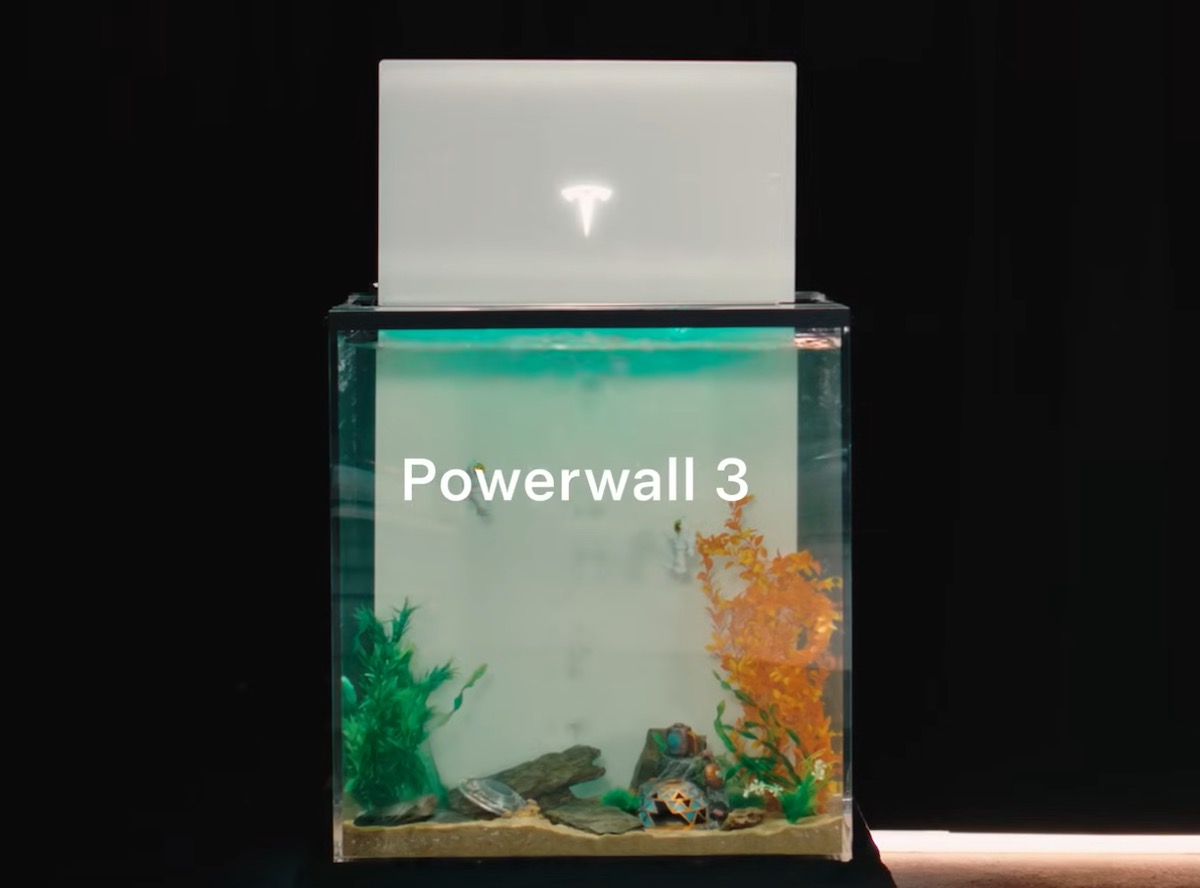
When energy storage pioneer Tesla finally unveiled its Powerwall 3 home battery in September last year, the reception from the company’s adoring public amounted to a bit of a damp squib.
Sure the new Powerwall would be much more powerful than its predecessor – a 13.5 kWh unit capable of 11.5kW continuous on-grid power and 11.5kW continuous backup power – but it didn’t look as good and, in a classic Tesla twist, was quickly revealed to not be compatible with earlier Powerwall models or other solar inverters.
But did they know that the Powerwall 3 could still function while submerged in two feet of water?
A video recently published by Tesla on YouTube shows a Tesla Powerwall 3 sitting in a fish tank – live fish and water included – while continuing to provide enough power to run a fridge, an induction cooktop and a coffee machine.
“Powerwall 3 is designed to operate in extreme environments – including under water,” it says below the video.
“Watch Powerwall 3 operate a variety of high-energy appliances all at once while submerged in two feet of water.”
It’s a fascinating sales pitch that – keeping in mind Tesla unorthodox marketing and social media approach to business – surely falls firmly into the “don’t try this at home” category, but might offer some comfort to those living in flood prone areas.
Comments range from “this is awesome!”, to “my fish will love this,” and “My sunken ship was getting old, this new tank piece looks like a delight.”
Make of it what you will. But One Step notes that on the Tesla Australia website, it says that to optimise the battery’s performance, it “should not be installed in locations subject to flooding or near water sources such as downpipes or sprinkler systems.” We recommend you do NOT try this at home.

Sophie is editor of One Step Off The Grid and deputy editor of its sister site, Renew Economy. Sophie has been writing about clean energy for more than a decade.



